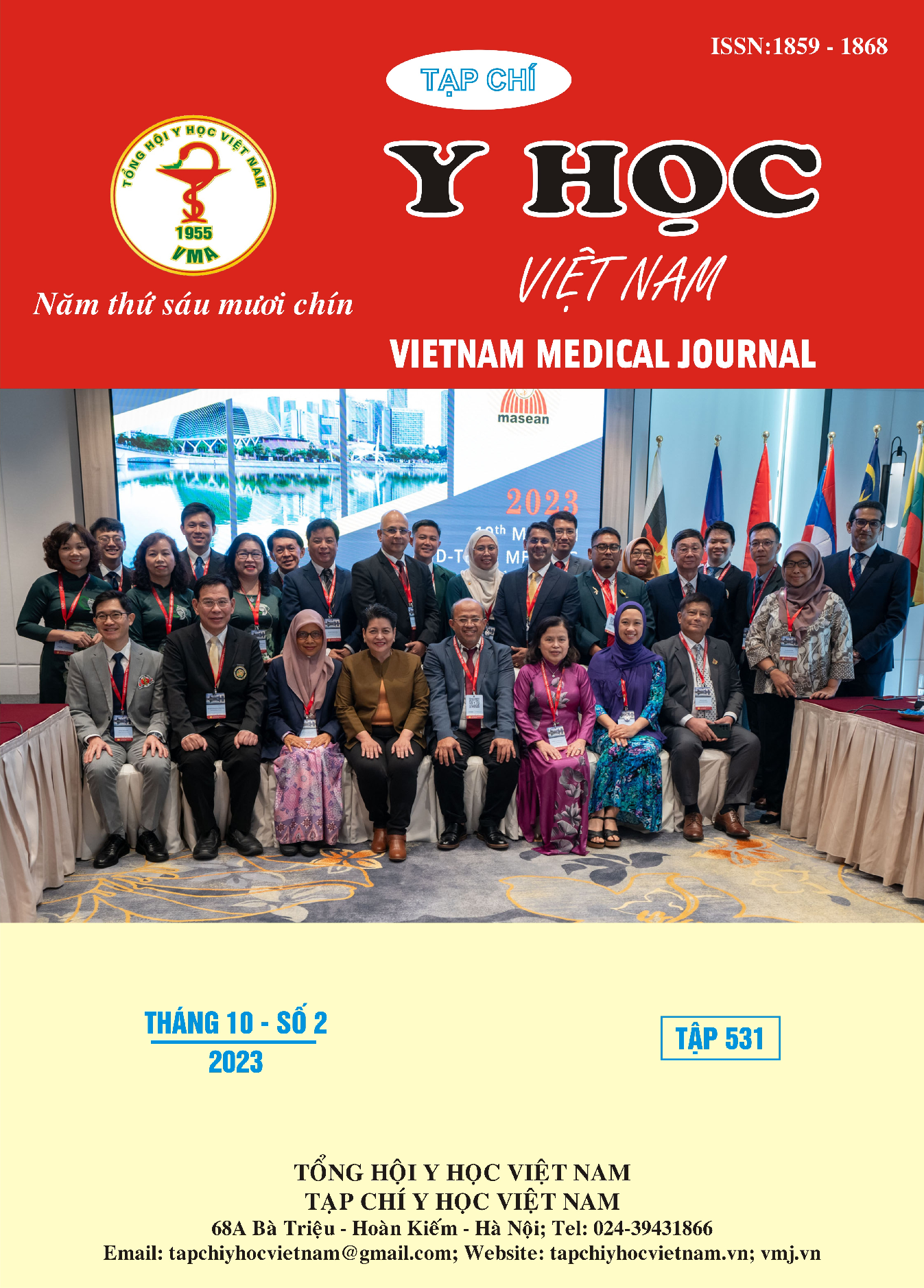A CROSS-SECTIONAL STUDY OF CHARACTERISTICS AND FACTORS ASSOCIATED WITH FRAILTY SYNDROME IN GOUT PATIENTS AT BACH MAI HOSPITAL
Main Article Content
Abstract
Objectives: This study aimed to describe clinical characteristics of frailty syndrome (FS) and assess factors associated with FS among gout patients. Methods: This study was conducted with cross-sectional data from 62 gout patients diagnosed by EULAR/ACR 2015 criteria, who were treated in inpatient settings at the Rheumatology Department of Bach Mai Hospital from October 2022 to May 2023. Results: According to CRAF grading, 82,3% of patients had frailty syndrome, with mild, moderate, and severe frail accounting for 35,5%, 30,6%, and 16,1%, respectively. Pain was the most common symptom among 10 major frailty domains in CRAF, affecting 96,8% of patients, followed by physical limitations and fatigue, both at 53,2%. The prevalence of frailty syndrome among patients who were aged ≥40 and those who were aged <40 was 87,7% and 20%, respectively, showing a significant difference (P = 0,005 <0,05) across age groups. All patients with severe chronic gout had frailty syndrome, whereas 61.5% of gout patients with mild severity presented with this syndrome. A significant difference (P = 0,007 <0,05), was found in the prevalence of frailty syndrome among patients with different levels of disease severity. The prevalence of the frailty syndrome in patients increased with the duration of gout: 100% and 81,2% for patients with the duration of 5 to 10 years and >10 years, respectively, indicating a significant difference (P = 0,025 < 0,05) in the prevalence of frailty syndrome across duration groups. Conclusion: The prevalence of the frailty syndrome was relatively high in gout patients and tended to increase with age and disease duration. Moreover, patients with more severe gout had a higher risk of developing frailty syndrome.
Article Details
Keywords
Frailty syndrome, gout
References
2. Singh H, Torralba KD. Therapeutic challenges in the management of gout in the elderly. Geriatrics. 2008;63(7):13-18, 20.
3. Tan C, Teng GG, Chong KJ, et al. Utility of the Morisky Medication Adherence Scale in gout: a prospective study. Patient Prefer Adherence. 2016;10:2449-2457.
4. Motta F, Sica A, Selmi C. Frailty in Rheumatic Diseases. Front Immunol. 2020;11:576134.
5. Salaffi F, Di Carlo M, Farah S, Carotti M. The Comprehensive Rheumatologic Assessment of Frailty (CRAF): development and validation of a multidimensional frailty screening tool in patients with rheumatoid arthritis. Clin Exp Rheumatol. 2020;38(3):488-499.
6. Nguyễn Vĩnh Ngoc. Bệnh gút. Nhà xuất bản y học2010, tr 189-212.
7. Azevedo VF, Buiar PG, Giovanella LH, Severo CR, Carvalho M. Allopurinol, benzbromarone, or a combination in treating patients with gout: analysis of a series of outpatients. Int J Rheumatol. 2014;2014:263720.
8. Collard RM, Boter H, Schoevers RA, Oude Voshaar RC. Prevalence of frailty in community-dwelling older persons: a systematic review. J Am Geriatr Soc. 2012;60(8):1487-1492.
9. Chen CY, Wu SC, Chen LJ, Lue BH. The prevalence of subjective frailty and factors associated with frailty in Taiwan. Arch Gerontol Geriatr. 2010;50 Suppl 1:S43-47.


